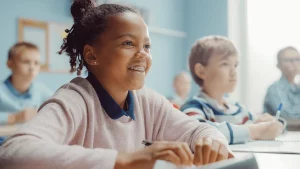Introduction In today’s classrooms, diversity is not merely a buzzword but a reality. Educators encounter learners with distinct academic abilities, cultural backgrounds, and learning styles. As such, employing adaptive teaching strategies has become pivotal in fostering an inclusive and effective learning environment that meets the diverse needs of students. Understanding Diverse Learners The modern classroom
Introduction
In today’s classrooms, diversity is not merely a buzzword but a reality. Educators encounter learners with distinct academic abilities, cultural backgrounds, and learning styles. As such, employing adaptive teaching strategies has become pivotal in fostering an inclusive and effective learning environment that meets the diverse needs of students.
Understanding Diverse Learners
The modern classroom is a melting pot of cultures, languages, and cognitive abilities. Recognizing these differences is the first step toward implementing effective teaching strategies. Some students may grasp concepts swiftly, while others require additional support and scaffolding. Cultural differences also play a significant role, influencing learning approaches and expectations.
Differentiated Instruction
One key approach to address diverse learning needs is through differentiated instruction. This method acknowledges that students have varied strengths, weaknesses, and preferences. It involves tailoring teaching methods, content, and assessments to accommodate these differences. For instance, providing multiple avenues to access information such as visual aids, hands-on activities, or auditory resources can aid in reaching students with diverse learning preferences.
Culturally Responsive Teaching
Cultural diversity brings a rich tapestry of experiences into the classroom. Culturally responsive teaching acknowledges and incorporates these diverse backgrounds into the curriculum. By leveraging culturally relevant materials, examples, and activities, educators create a more engaging and relatable learning experience. This approach fosters inclusivity and helps students see their cultural identity positively reflected in the learning process.

Image By:https://www.shutterstock.com
Personalized Learning
Personalized learning strategies enable educators to tailor instruction to individual student needs. Leveraging technology and data-driven insights, teachers can create personalized learning paths for students. Adaptive software and learning platforms allow for individualized pacing, content selection, and assessment methods, empowering students to learn at their own speed and in a way that suits their abilities.
Universal Design for Learning
UDL is a framework that aims to remove barriers to learning by proactively designing instructional materials and activities to accommodate diverse learners. It advocates for providing multiple means of representation, engagement, and expression. For example, offering content in various formats, incorporating interactive elements, and allowing for different ways of demonstrating understanding caters to a wide range of learners.
Collaborative Learning and Peer Support
Creating a collaborative environment encourages peer learning and support among students. Group activities, discussions, and peer tutoring foster an atmosphere where students can learn from each other’s strengths and experiences. This approach not only promotes academic growth but also cultivates empathy and understanding among diverse peers.
Continuous Assessment and Feedback
Regular assessment and feedback are crucial components of adaptive teaching strategies. Continuous assessment allows educators to monitor students’ progress and adapt instruction accordingly. Providing timely and constructive feedback helps students understand their strengths and areas for improvement, guiding them toward academic success.

Image By:https://www.shutterstock.com
Conclusion
In conclusion, effective teaching in diverse classrooms necessitates adaptive strategies that cater to varying academic abilities and cultural contexts. Differentiated instruction, culturally responsive teaching, personalized learning, UDL, collaborative learning, and continuous assessment collectively contribute to creating an inclusive learning environment. By embracing these approaches, educators can empower students to thrive academically while celebrating their diversity and unique strengths. Understanding and implementing these strategies will undoubtedly pose challenges, but the rewards enhanced student engagement, improved learning outcomes, and a more inclusive classroom make the efforts worthwhile in preparing students for success in an increasingly diverse world.

















Leave a Comment
Your email address will not be published. Required fields are marked with *